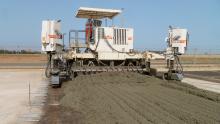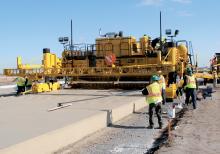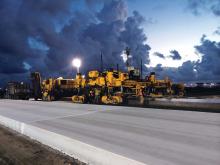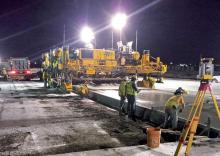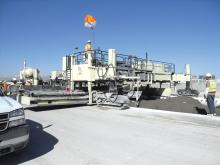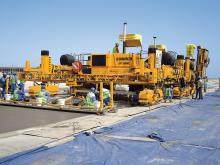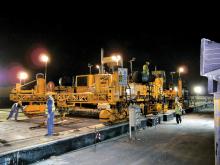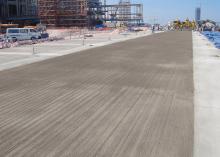Canada’s vast tar sands operation is providing a major financial boost to the country and this industry has relied heavily on Fort McMurray airport.
Situated in Alberta, Fort McMurray is a remote town that has seen a huge expansion following the upturn in activity in the tar sands operations nearby. Although the massive resource has been worked for decades, only in the last 15 years or so have new extraction methods made the operation truly economic.
Since 2010 Fort McMurray’s population has increas
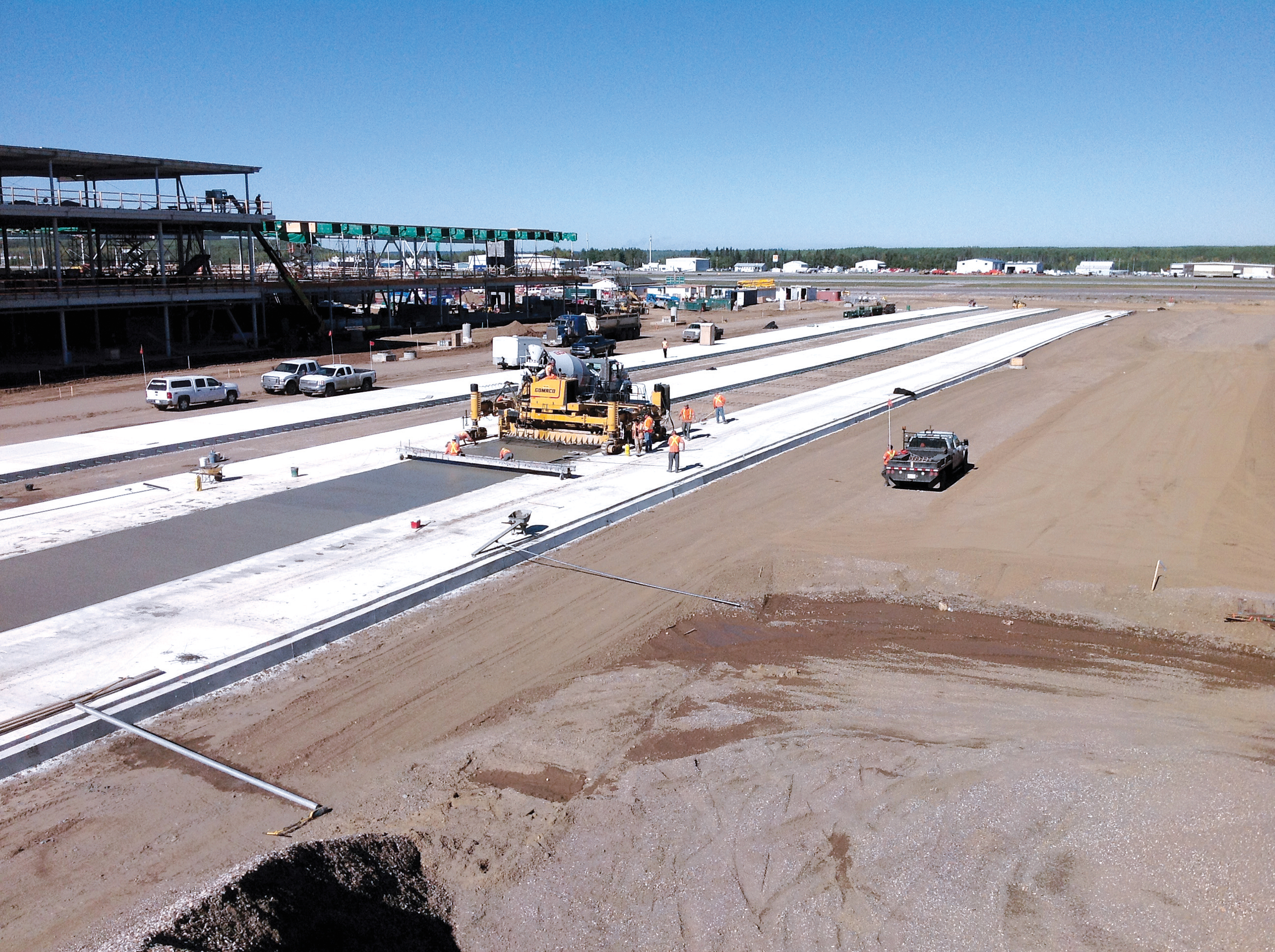
The GOMACO Commander III paver has carried out slipforming for Fort McMurray’s airport expansion
Canada’s vast tar sands operation is providing a major financial boost to the country and this industry has relied heavily on Fort McMurray airport.
Situated in Alberta, Fort McMurray is a remote town that has seen a huge expansion following the upturn in activity in the tar sands operations nearby. Although the massive resource has been worked for decades, only in the last 15 years or so have new extraction methods made the operation truly economic.Since 2010 Fort McMurray’s population has increased 80% and the infrastructure has struggled to cope, with the airport now having to handle far more flights than it was designed for. Constructed in 1985 the terminal building was designed to cope with just 250,000 passengers/year, somewhat less than the 957,000 who used the facility in 2012. To alleviate the situation the airport is being expanded and improved with a new 14,000m2 terminal building that is five times larger than the current facility. The airport will also have a new apron area large enough to park eight aircraft.
Local firm Proform Concrete Services has undertaken out the slipforming for the new 286m long by 36.6m wide concrete apron, using its
Although the concrete was being supplied by a batching plant just a 20-minute drive away from the project in normal traffic conditions, peak traffic posed problems. The aim was for the job to be completed in six paving runs of 286m each, with the machine set to pave 6.1m wide to a depth of 380mm. Traffic density meant that it was hard to schedule deliveries of concrete on time, which mean the contractor was generally unable to complete each planned 286m paving run in one day.
Hand-finishing work behind the paver was minimised, while special attention was given to the edges to ensure the six different paving passes would connect smoothly, without bumps, for the planes to travel across.

